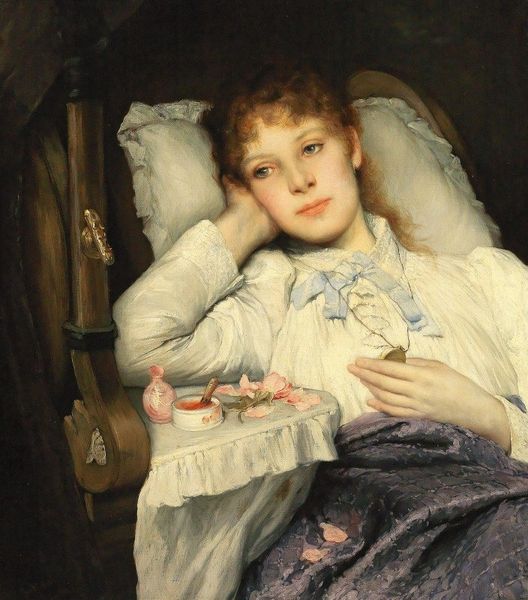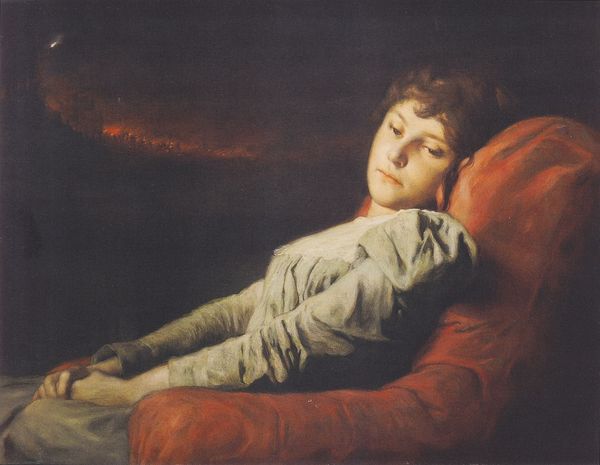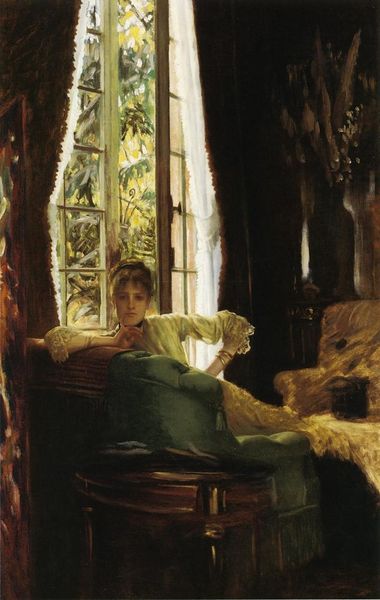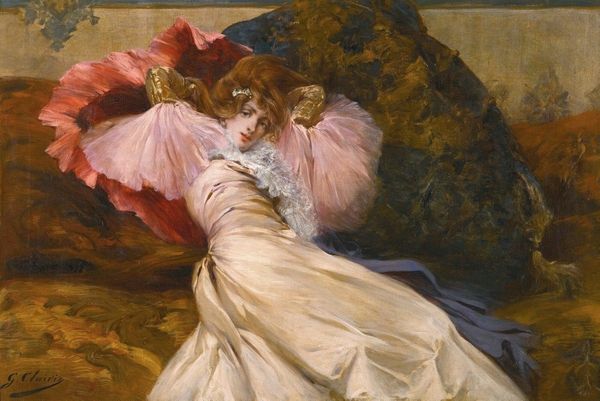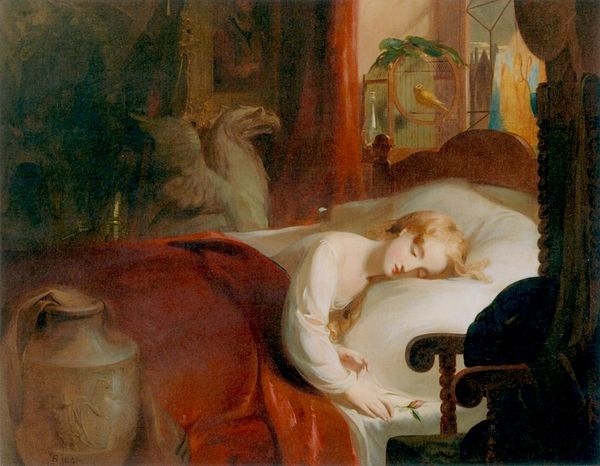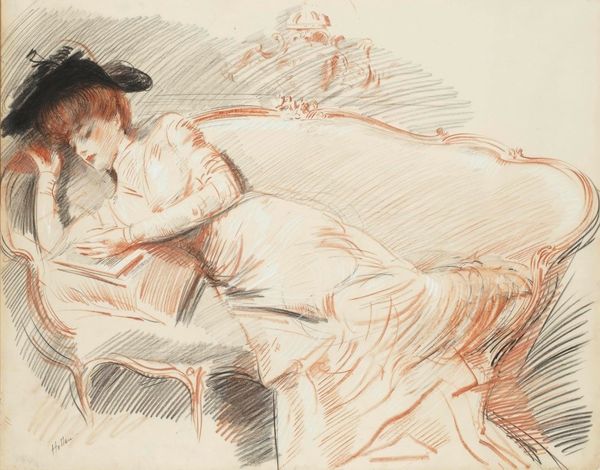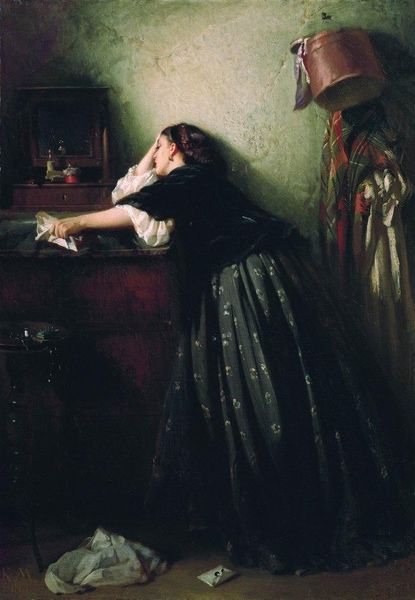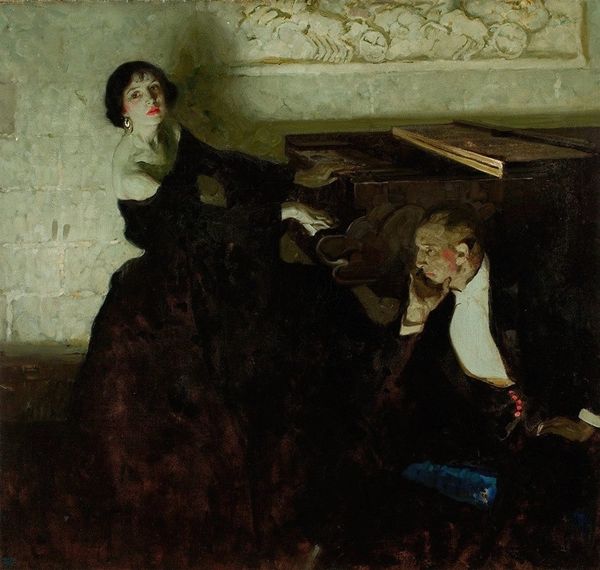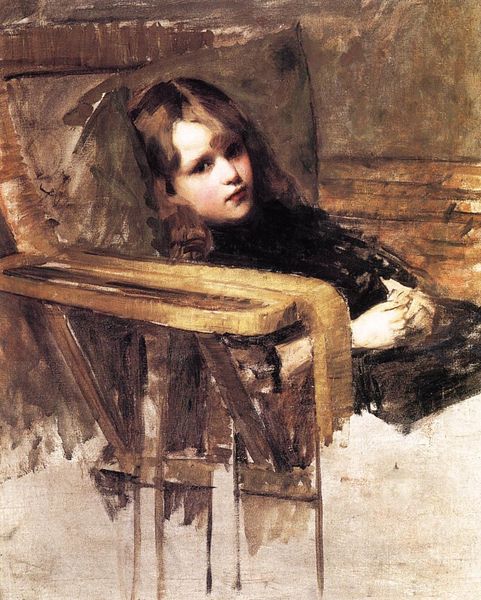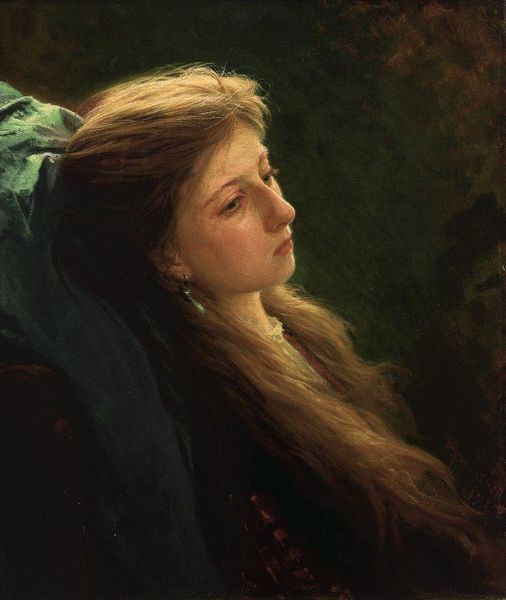
Dimensions: 30.5 x 43.2 cm
Copyright: Public domain
Curator: Looking at Tissot’s painting from 1878, "Kathleen Newton in an Armchair," the immediate impression is one of melancholic repose. She is captured in oil-paint, almost swallowed by the textures surrounding her. Editor: The sheer amount of fur in that painting is what grabs my attention. Think about it – fur trim, a fur throw. This painting reflects the material culture of the Victorian leisure class and its obsession with conspicuous consumption. Curator: Exactly, and the technique adds to that sense. The texture of the wicker chair and the layers of fabric show the skills acquired during his time with Degas. But it also shows Kathleen in the last year of her life, perhaps exhausted with its expectations. It's all about social presentation, really. Editor: That’s a strong point. It's interesting how he juxtaposes the woman's supposed inactivity with the visible labour involved in producing the luxurious items that adorn the painting and are made to make it feel less gloomy and sad. Curator: Indeed. Tissot had his own artistic labor tied up with hers as a subject; consider the power dynamics in play here, framing a woman who remained largely confined to the domestic space while he was becoming one of the wealthiest artists of his day. And she became his muse. Editor: Her presence highlights questions about women’s representation during that time, especially a woman who struggled to navigate the stringent societal rules regarding her separation and health. But what impact was she having behind closed doors on Tissot's views? Was this a love story for the ages? What if, now that we are seeing more from the female gaze, we would learn that she used Tissot's status to escape her grim life? It changes everything. Curator: It challenges assumptions to understand the relationships between artists and the models they portray; but it adds layers of intrigue to a work that could be dismissed simply as a portrait of the leisure class. Editor: Right. Looking through that critical lens of production and considering the circumstances of Kathleen Newton’s life invites a re-evaluation. Curator: Yes, it turns a potentially sentimental image into a prompt for discussions about artistic labor, social status, and the complexities of historical representation. Editor: Ultimately, Tissot’s "Kathleen Newton in an Armchair" reveals as much about Victorian society’s fabrications and tensions as it does about the artist and his muse.
Comments
No comments
Be the first to comment and join the conversation on the ultimate creative platform.


